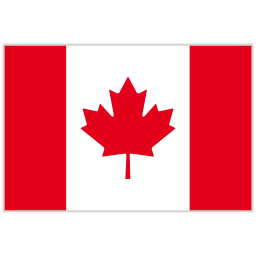COSTA RICA – GENERAL INFORMATION

GENERAL
INFORMATION
(02/2025)
GEOGRAPHY
Costa Rica, lying between Nicaragua and Panama, is
a complete coast-to-coast segment of the Central American isthmus. Its width
ranges from 74 to 176 miles. A low, thin line of hills that rises between Lake
Nicaragua and the Pacific Ocean in Nicaragua, broadens as it enters northern
Costa Rica, eventually forming the high, rugged, mountains in the Pacific
Northwest and the centre of Costa Rica. The southern half of the country is
dominated by mountains of tectonic origin; the highest peak is Chirripó Grande,
which reaches 12,530ft. More than half the population live on the Meseta
Central, a plateau with an equitable climate. It is the setting for the
country’s capital, San José. There are lowlands on  Credit: Central Intelligence Agency
Credit: Central Intelligence Agency
both coast lines, mainly swampy on the Caribbean
coast, with savannah and dry forest on the Pacific Northwest merging into
mangrove and rainforest southward. Rivers cut through the mountains, flowing
down to both the Caribbean and the Pacific.
HISTORY
Christopher Columbus set foot in
THE
PEOPLE
The population
of Costa Rica is mainly white (94%, including mixed European and Amerindian
mestizos). There is a small proportion of black (3%), Amerindian (1%), and Chinese (1%) residents.
SOCIAL CONVENTIONS
Handshaking is common although it is typically
limp, and formal titular address is important. Christian names are preceded by Señor
for a man and Señora for a woman, but Don is used to address a highly
respected man and Doña for a female equivalent. Normal
courtesies should be observed when visiting someone's home and gifts are
appreciated as a token of thanks, especially if invited for a meal. For most
occasions casual wear is acceptable, but beachwear should be confined to the
beach. The official religion is Catholic Christianity, but freedom of religious
choice is respected.
LANGUAGE
Spanish is the official language. English is widely
spoken. Some French, German and Italian are also spoken.
GOVERNMENT
The country has no armed forces.
TIME
ZONE
GMT - 6.
ELECTRICITY
Standard current is 110 volts, 60 Hertz.
CLIMATE
Clothes
to Wear:
Lightweight cottons and linens most of the year,
warmer clothes for cooler evenings. Waterproofing is necessary during the rainy
season. Loose-fitting clothing is best. Wear neutral browns and greens for
birding and wildlife viewing.
LOGISTICAL
Entry
& Exit Requirements:
For entry into Costa Rica, a U.S. citizen
must present a valid passport that will not expire for at least three months
after departure and a roundtrip/outbound ticket. Airlines may not permit
passengers to board flights to Costa Rica without a roundtrip ticket unless
they have Costa Rican citizenship, residency or a visa. Passports should be in good condition; Costa
Rican immigration may deny entry if the passport is damaged in any way. Costa
Rican authorities generally permit
To extend a stay, travelers must submit an
application for an extension to the Office of Temporary Permits in the Costa
Rican Department of Immigration. Extension requests are evaluated on a
case-by-case basis. Tourists who stay more than ninety days, without receiving
an extension, may experience a delay at the airport when departing or may be
denied entry to Costa Rica on future visits.
The most authoritative and up-to-date
information on Costa Rican entry and exit requirements may be obtained from the
Consular Section of the Embassy of Costa Rica at 2114 “S” Street NW,
Washington, DC 20008. Tel: (202) 234-2945/46, fax (202) 265-4795. You may visit
the Embassy of Costa Rica’s website
or contact the Embassy via email.
You may also obtain information from the Costa Rican consulates in
Americans traveling in
Embassy
Locations:
Embassy
of the
Pavas,
Tel: (506) 2519-2000
Emer. A/hours Tel: (506) 2220-3127
http://sanjose.usembassy.gov/index.html
Embassy of
Sabana Sur: Behind the “Contraloría” in the Oficentro
Ejecutivo La Sabana
Building 5, 3rd floor
Tel: (506) 2242-4400
http://www.canadainternational.gc.ca/costa_rica/index.aspx?lang=eng
Health:
Persons traveling to Costa Rica
from many countries in South America and Sub-Saharan Africa must provide
evidence of a valid yellow fever vaccination prior to entry.
Information
on vaccinations and other health precautions, such as safe food and water
precautions and insect bite protection, may be obtained from the Centers for
Disease Control and Prevention’s (CDC) hotline for
international travelers at 1-800-CDC-INFO (1-800-232-4636) or via the CDC website at http://www.cdc.gov/travel. For information about outbreaks of
infectious diseases abroad, consult the infectious diseases section of the World Health Organization (WHO)
website at http://www.who.int/topics/infectious_
diseases/en/. The
WHO website also contains additional health information for travelers,
including detailed country-specific health information.
Banks &
Currency:
Costa Rican Colón
(CRC; symbol ₡) = 100 céntimos. Notes are in
denominations of ₡10,000, 5,000, 2,000 and 1,000. Coins are in denominations of ₡100,
50, 25, 20, 10 and 5. US Dollars are also widely accepted.
Available at banks and bureau de change. Some hotels may
also change money.
Diners Club, MasterCard and Visa are all accepted;
American Express slightly less so. Many banks will only process MasterCard for
cash credits. Cash may be the only form of payment in smaller towns and rural
areas. ATM’s usually accept foreign cards.
The import and export of local and foreign currency is
limited to US$10,000. An amount above this must be declared upon arrival.
Banking Hours: Mon-Fri 8/9am-3/6pm.
Cell
Phone Usage:
Cell phone coverage is generally good in Costa Rica's
cities and metropolitan areas, although limited coverage is expected in remote
or mountainous areas.
Please contact your cell phone provider to
determine whether your contract includes coverage in the country you are
visiting. Depending on your contract you may have to add international services
and/or country specific services.
ENTERTAINMENT
Food
& Drink:
Restaurants in towns and cities serve a variety of
foods including Chinese, French, Italian, Mexican and North American. Food
usually ranges from satisfactory to sublime. In San José, options range from
expensive and exemplary gourmet restaurants to cheap sodas (small,
simple restaurants) serving local food, including set lunches called casados at
bargain prices.
National specialities:
• Casado (a fixed daily lunch, usually featuring rice,
beans, stewed chicken or beef, fried plantain, salad and cabbage)
• Olla de carne (soup of beef, plantain, corn, yuca and chayote)
• Sopa negra (black beans with a poached egg)
• Picadillo (meat and vegetable stew)
• Bocas (savoury snacks served at bars or before main
meals in restaurants).
National drinks:
There are many types of cold drinks made from fresh
fruit, milk or cereal flour, for example:
•
Cebada (fermented barley; an indigenous beverage)
• Pinolillo (corn and cocoa)
• Horchata (liquid corn meal or ground rice with cinnamon)
• Batidos (fresh fruit shakes made with either milk or water
blended with ice)
• Pipas (fresh coconut water served in the husk)
• Local lager-style beers such as Imperial are a perfect cure for hot
days
• Coffee is good, but many local restaurants serve lesser-quality domestic
brand coffee.
Nightlife:
San José especially has many nightclubs, venues
with folk music and dance, theatres and cinemas. Elsewhere nightlife is mostly
restricted to tourist resorts by the beach.
Shopping:
Special purchases include wood and leather rocking
chairs (which dismantle for export), as well as a range of local crafts
available in major cities and towns. Local markets are also well worth
visiting. Prices are slightly higher than in other Latin American countries.
Best buys are wooden items, carved masks, ceramics, gold pre-Columbian replica
jewellery and leather handicrafts.
Shopping hours: Mon-Sat 9am-6/7pm. There may be variations between
areas.
BAGGAGE
Baggage
rules for international and domestic air travel have changed much in recent
years, differ from carrier to carrier and these days even may cover your
on-board bags. Checking luggage may cost a separate fee or may be free
depending on your personal status with the carrier. We therefore encourage you
to read your ticket’s small print and/or contact your carrier for exact rules.
TIPPING
Tipping is entirely up to you. It depends
on the level of service, whether or not you feel comfortable giving tips, and
your budget. Costa Ricans, as a general rule, do not tip. At Restaurants a 10%
gratuity for service and 15% for sales tax is included in your bill. Tipping is
not used when it comes to taxis, unless extra service is provided. Bellboys are
often tipped a minimum of $1.00 per bag or the equivalent in colones per bag, at check-in and
check-out. Chamber maids: $0.50-1.00 per night is acceptable. Sometimes their
service is overlooked. For guides and drivers it really depends on the service
rendered, ca. $5.00 per person is acceptable.
LAUNDRY
Laundry
service is available at most hotels in the main centers. Generally, you should
allow 24 hours before the item is returned to you, however, some have an
emergency service available at an extra charge.
PHOTOS & VIDEOS
In
some countries you must refrain from photographing sites such as Military bases
and industrial installations. Also be aware of cultural sensitivities when
taking pictures of or near churches and other religious sites. It is always
courteous to ask for permission before taking photographs of people.
USE
OF DRONES
The
use of drones is being legislated by many countries. In some cases drones are
already forbidden and their unauthorized use may carry severe penalties. If you
plan to travel with a drone, please contact the embassy or consulate of the
country you wish to visit.




